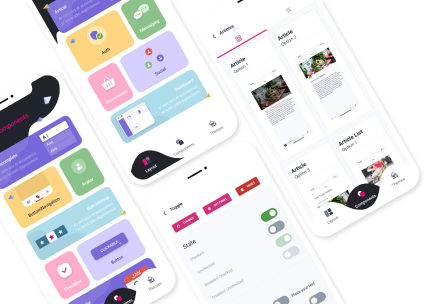How To Manage Remote Software Teams With Ease
5 min readThe results are in, says Harvard Business Review: to succeed in a global economy today, a geographically dispersed workforce is imperative.
Not only are you at the forefront of promising markets (with quicker time to yours), but you can tap into world-class talent to manage remote software teams at scalable levels that suit your unique company workload. Side note: I talk a lot more on the myriad of benefits to remote teams here
But, naturally, for all of its agile advantages, risks of outsourcing software development do exist as well, and many chief technical officers I speak to are not reserved about their hesitation in working with tech talent from afar.
If so, maybe some of these concerns sound familiar to you?:
- How will my existing technical team get along with one located offshore? What about language, or cultural barriers?
- Our I.T. team need to work closely together for maximum collaboration. How is that possible across different time zones, using unpredictable conferencing technology?
- Our technology produces industry-leading products or services. Can an offshore technology partner guarantee us the level of quality we’d find in local talent?
The answer is that yes, distributed teams can work collaboratively, productively and create work that’s both high-quality and timely. But as a manager and leader, you’re a crucial part of this process.
From you, it’s going to take keen management, some core working principles and most importantly, opening your mind to accept that many of the horror stories around offshoring can be easily debunked.
Remote tech teams don’t need to be micromanaged, and they can work to standards expected from onshore talent – my own team always do. Here’s how to manage your remote software teams with ease, ensuring happy, connected and high-performing hubs across the globe.
Focus on specific traits of effective remote software teams in your hires
The people steering the ship really do make the voyage, so focus on hiring for and cultivating a strong team dynamic in your offshore talent pool.
This is obviously easier said than done, but some key traits to focus on are looking for individuals with ambition and a clear history of productivity (with examples), as well as people you feel an inherent trustworthiness of. Remember, this is a two-way street, because they must feel that you trust them in order for them to exhibit trustworthy behaviour in return. This, in turn, fosters rapport that allows for clearer lines of communication and problem-solving.
Also, hire people who can competently and confidently write, as this (as well as video communication) will be your primary form of communication. This can often pose a challenge in offshoring, but with tech hubs like Vietnam mandating English is taught as a second language, it’s becoming easier than ever to ensure.
Utilise collaboration tools that foster instant connection in your software development team
In lieu of geographical proximity, you can still facilitate an environment that feels like your team are only a stones throw. How?
Use tried-and-tested software tools that are conducive to agile work, help your team communicate in real-time (with personality and fun, where necessary – much the same way they would if sat next to one another), see and hear one another’s body language and voice during one-on-ones and stand-ups, and manage and contribute to projects via clear workflow roadmaps.
Making this a regular and normalised part of the work day not only helps crucial information disseminate (stopping hallway-only chat and silo team dynamics), but it also helps embed and normalise cultural differences that embrace the ‘we’ and make working more inclusive and productive for everyone.
Make process your core mission to manage remote software teams effectively
Think of your process as the DNA that makes you and your remote team successful. Without it, you’ll lack the structure and direction that gets things ticked off, fixed up and finally, shipped out.
Implement mechanisms that track progress and ensure no-one is working redundantly, with a good level of fluidity; after all, it’s about creating a functioning feedback loop, not confining developers to narrow systems that don’t work.
Encourage everyone on the team, remote or onshore, to “do” support, so that they can hear firsthand customer problems (therefore more closely championing the end product) and give everyone an equal opportunity to take responsibility for the code the customer uses. This self-sufficiency helps teams remain more autonomous, boosting morale and minimising missed expectations in the process.
Ultimately, it doesn’t matter where the work is done – but rather, how (and how you support it as a technical manager). Good tools, processes and right-fit hires are crucial, and contrary to popular belief, working with remote developers can actually make this more effective, given the potential for accessing more high-calibre talent thanks to a widening of the talent net.
If you haven’t got the time or resources to hire or cultivate this yourself, get in touch with me so that I can show you how we build and manage agile teams here at Groove Technology.









